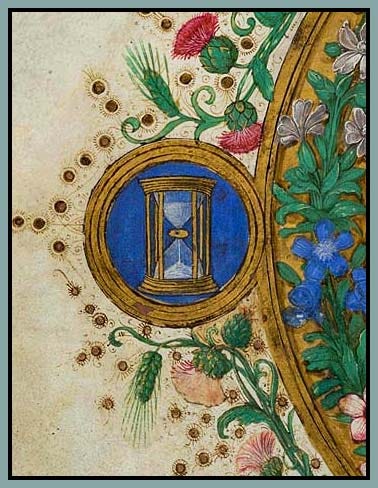The Most Poetic Time Zone in History
What would life be like in MMT (Medieval Monastic Time)? No clocks allowed.
Methinks it were a happy life
To be no better than a homely swain,
To sit upon a hill as I do now,
To carve out dials quaintly, point by point
Thereby to see the minutes how they run:
How many makes the hour full complete,
How many hours brings about the day,
How many days will finish up the year,
How many years a mortal man may live.
—Shakespeare, 3 Henry VI
Last week we pondered the monumental paradox of medieval monastic life, and on Sunday we studied a remarkable painting that emerged from the sonorous, candlelit spirituality and mysterious creative energies of a medieval monastery. The monk who painted that image prayed in a church that took twenty-three years to build. Twenty-three years. The bishop who founded the monastery, laid the church’s first stone, and patronized its artwork was long dead when the edifice was finally complete.
Nowadays, major construction projects rarely last twenty-three months, much less twenty-three years. The Empire State Building—the world’s tallest structure for almost forty years, and built at a time when technology was quite primitive by twenty-first-century standards—was open for business eighteen months after the work began.
And yet, twenty-three years was a fairly quick turnaround for medieval construction. You’ve probably heard of cathedrals that took centuries to build. Centuries—that means not one person who was there at the beginning lived to see the epic masterpiece completed. Would modern societies even bother beginning a project that might take a century to complete? Does the modern mind even tolerate timescales of that magnitude? Heck, I’m reluctant to plant an apple tree knowing that I might have to wait seven years for the sluggard to give me return on investment, and then I also feel a vague (and rather illogical) resentment at the possibility that it will outlive me, bearing fruit in my absence as though everything is perfectly normal.
Medieval folks, on the other hand, enthusiastically planted buildings that would take not seven but seventy (or more) years to reach maturity, and they did not spurn the thought of full fruition arriving only after death—this would be a homage to their noble and enduring labor rather than a grim reminder of their mortality. And in any case, eternal salvation was a far more urgent task than the construction project. There would be plenty of time to admire the finished structure from heaven.
However, there’s something more going on here. It wasn’t just that medieval communities had different ideas about earthly labors and life after death. We must also understand that waiting a hundred years for a new church in the Middle Ages was not like waiting a hundred years for a new church in the modern world. It cannot possibly have been—because the passage of months and years was not the same for them as it is for us. The nature of time itself was not the same for them as it is for us.
Keep reading with a 7-day free trial
Subscribe to Via Mediaevalis to keep reading this post and get 7 days of free access to the full post archives.




